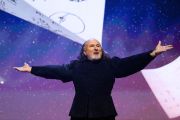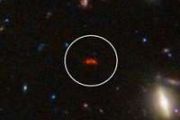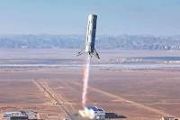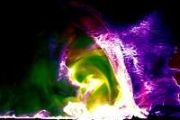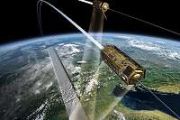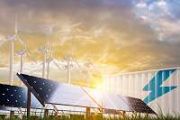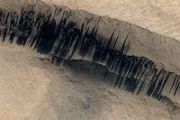
Copernical Team
A surprise chemical find by ALMA may help detect and confirm protoplanets
 Scientists using the Atacama Large Millimeter/submillimeter Array (ALMA) to study the protoplanetary disk around a young star have discovered the most compelling chemical evidence to date of the formation of protoplanets. The discovery will provide astronomers with an alternate method for detecting and characterizing protoplanets when direct observations or imaging are not possible. The results
Scientists using the Atacama Large Millimeter/submillimeter Array (ALMA) to study the protoplanetary disk around a young star have discovered the most compelling chemical evidence to date of the formation of protoplanets. The discovery will provide astronomers with an alternate method for detecting and characterizing protoplanets when direct observations or imaging are not possible. The results Up up up and finally over: Sols 3873-3875
 We made it! We are peeking up over the edge of the ridge that we have been trying to climb for a few weeks now. The view ahead is spectacular but it's worth pausing for a minute to look back down into the canyon. You can faintly see rover tracks in the centre of the image, left behind as we slowly made our way up the hill. Lots of slipping and sliding, and drives ending too soon or terminating o
We made it! We are peeking up over the edge of the ridge that we have been trying to climb for a few weeks now. The view ahead is spectacular but it's worth pausing for a minute to look back down into the canyon. You can faintly see rover tracks in the centre of the image, left behind as we slowly made our way up the hill. Lots of slipping and sliding, and drives ending too soon or terminating o ISRO's Chandrayaan-3 Set for Mid-July Launch, Reveals ISRO Chief
 The Indian Space Research Agency (ISRO) is preparing for the anticipated launch of its third lunar expedition, dubbed Chandrayaan-3. Officials from the agency disclosed that the mission is tentatively scheduled for mid-July.
A high-ranking ISRO official mentioned, "We have the launch window between July 12 and July 19. The exact date has not been finalised."
The Chairman of ISRO and
The Indian Space Research Agency (ISRO) is preparing for the anticipated launch of its third lunar expedition, dubbed Chandrayaan-3. Officials from the agency disclosed that the mission is tentatively scheduled for mid-July.
A high-ranking ISRO official mentioned, "We have the launch window between July 12 and July 19. The exact date has not been finalised."
The Chairman of ISRO and Gullies on Mars could have been formed by recent periods of liquid meltwater
 A study led by Brown University researchers offers new insights into how water from melting ice could have played a recent role in the formation of ravine-like channels that cut down the sides of impact craters on Mars.
The study, published in Science, focuses on Martian gullies, which look eerily similar to gullies that form on Earth in the Dry Valleys of Antarctica and are caused by wate
A study led by Brown University researchers offers new insights into how water from melting ice could have played a recent role in the formation of ravine-like channels that cut down the sides of impact craters on Mars.
The study, published in Science, focuses on Martian gullies, which look eerily similar to gullies that form on Earth in the Dry Valleys of Antarctica and are caused by wate Long history and bright future of space sample deliveries
 When NASA's OSIRIS-REx spacecraft releases a capsule with material from asteroid Bennu onto the Utah desert on Sept. 24, it will become the latest in a line of missions to gather samples from space and deliver them to Earth. Collecting material from space is a challenging feat that requires teams of dedicated scientists and engineers, innovative technology, and patience. But the scientific break
When NASA's OSIRIS-REx spacecraft releases a capsule with material from asteroid Bennu onto the Utah desert on Sept. 24, it will become the latest in a line of missions to gather samples from space and deliver them to Earth. Collecting material from space is a challenging feat that requires teams of dedicated scientists and engineers, innovative technology, and patience. But the scientific break SpaceX Dragon begins return to Earth with experiments, samples from ISS
 A SpaceX Dragon cargo spacecraft left the International Space Station on Thursday to return to Earth with NASA experiments and samples dating back as far as six years.
The spacecraft left the ISS's Harmony module at 12:30 p.m. EDT and is set to make a parachute-assisted splashdown off the coast of Florida at about 10:30 a.m. on Friday.
The spacecraft is carrying more than 3,600 p
A SpaceX Dragon cargo spacecraft left the International Space Station on Thursday to return to Earth with NASA experiments and samples dating back as far as six years.
The spacecraft left the ISS's Harmony module at 12:30 p.m. EDT and is set to make a parachute-assisted splashdown off the coast of Florida at about 10:30 a.m. on Friday.
The spacecraft is carrying more than 3,600 p Virgin Galactic finally takes its first paying customers to space
 Virgin Galactic successfully flew its first paying customers to the final frontier Thursday, a long-awaited achievement that puts it back on track in the emerging private spaceflight sector.
Italian Air Force officers unfurled their nation's flag and peered out windows at the curve of Earth while enjoying a few minutes of weightlessness at 52.9 miles (85.1 kilometers) above sea level.
"I
Virgin Galactic successfully flew its first paying customers to the final frontier Thursday, a long-awaited achievement that puts it back on track in the emerging private spaceflight sector.
Italian Air Force officers unfurled their nation's flag and peered out windows at the curve of Earth while enjoying a few minutes of weightlessness at 52.9 miles (85.1 kilometers) above sea level.
"I The Mars Sample Return mission is starting to look expensive
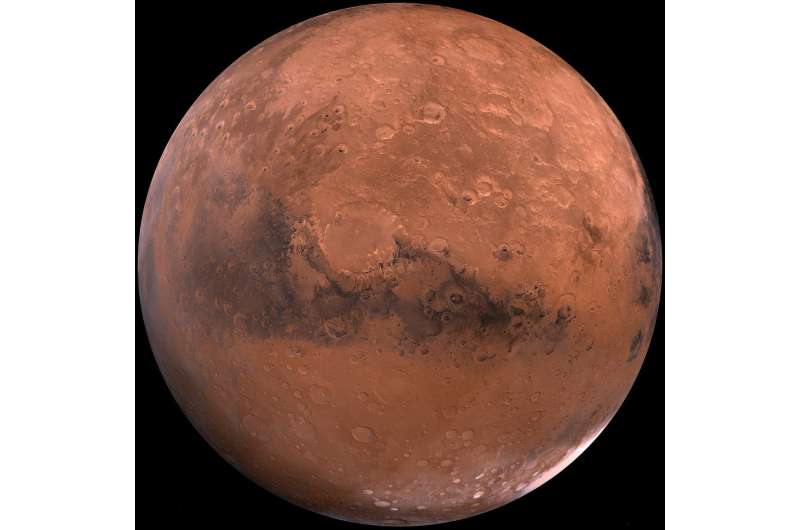
Getting to space is hard. It's even more hard to do new and interesting things in space. And when projects get hard, that usually means they cost more money. That is certainly the case for one of the most anticipated missions on NASA's current docket—the Mars Sample Return (MSR) mission. And it's not looking like it's going to get any easier anytime soon.
A recent report from Casey Dreier, the Planetary Society's Chief of Space Policy, looks at some of the challenges the mission faces. Arguably, the mission itself has already started, with Perseverance busily capturing, analyzing, and then dropping off samples to be returned to the laboratories on Earth. But three other main mission components still need to be completed for those samples ever to see the light of day (or the light of a sealed laboratory chamber) on Earth.
NASA is responsible for two of those components—the Sample Return Lander (SLR) and the Mars Ascent Vehicle (MAV). Each is appropriately named, as the SLR is designed to land, collect the samples that Perseverance has been collecting, and then return them to the MAV.
Italian researchers reach the edge of space flying aboard Virgin Galactic's rocket-powered plane

Virgin Galactic launches first commercial spaceflight
 Virgin Galactic successfully commenced commercial spaceflights on Thursday, marking a major milestone for the company founded in 2004 by British billionaire Richard Branson.
Its inaugural customers were a three-member crew from the Italian Air Force and National Research Council of Italy, alongside a Virgin Galactic astronaut instructor occupying the fourth seat.
Named Galactic 01, t
Virgin Galactic successfully commenced commercial spaceflights on Thursday, marking a major milestone for the company founded in 2004 by British billionaire Richard Branson.
Its inaugural customers were a three-member crew from the Italian Air Force and National Research Council of Italy, alongside a Virgin Galactic astronaut instructor occupying the fourth seat.
Named Galactic 01, t 



